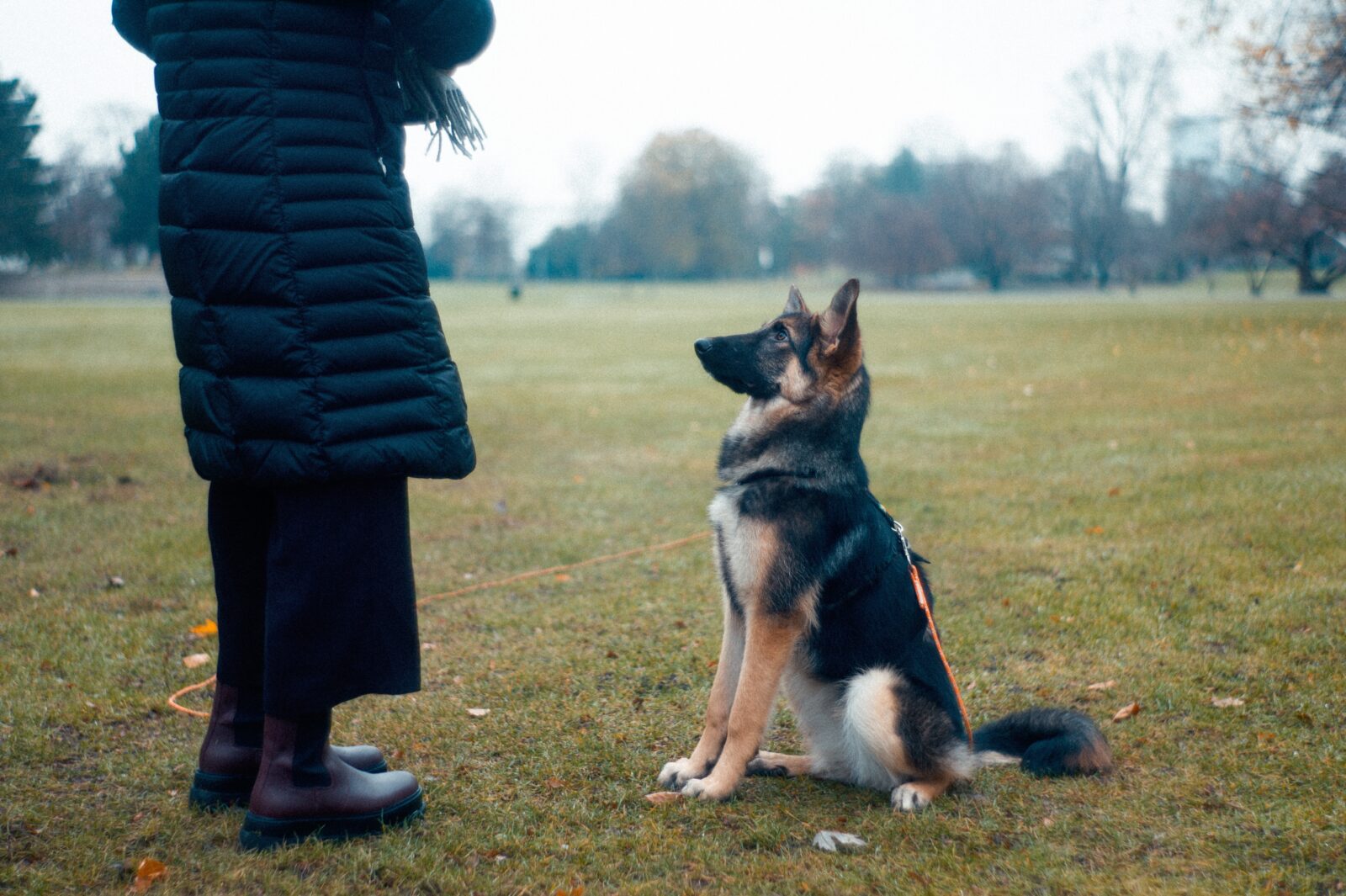Basic Commands To Make Your Dog Obey

Basic Commands to Make Your Dog Obey
Ever wondered why most dogs are untrained despite the boatload of information online on how to make them obey commands? It’s because while there are rules in place on how to go about training Fido, not all of them are effective. Many dog owners or fur companions make one mistake: they jump straight into teaching complex skills without laying the groundwork.
This is where basic obedience training comes in. It serves as the foundation for all future commands that you will teach your dog.
Dogs are smart creatures; frankly, you don’t have to go through a lot of stress to succeed in obedience training. Let’s face it, dogs love pleasing you and will quickly learn the basic commands with consistency and a positive reinforcement-based training approach.
So, it’s not entirely about how the dog responds to the training. It’s more about your approach as their caretaker.
In their natural habitat, dogs are instinctively hierarchical and look to their pack leader for guidance. When you establish yourself as the pack leader, your dog will naturally follow your commands, and training becomes straightforward.
With that said, here are five basic commands that will make your dog obey. Learning these techniques will also teach you how to better communicate with your four-legged furry friend.
1. Sit
This is one of the first commands that most people teach their puppies, and for a good reason. It’s a basic yet essential command that teaches your dog to remain in one place until released.
Once Fido learns this trick, you’ll see that they become calmer and more focused. Essentially, “sit” is a good foundation for other commands.
How to train:
Start with your dog in a standing position. Hold a treat close to their noses and move it slowly above their heads. They will naturally sit down as they follow the treat with their nose. Once they’re in a sitting position, say “sit” and give them the treat. Make sure you repeat this process up until your dog begins to understand your instructions without any reward.
How it benefits you:
Teaching your dog to sit reinforces the idea that they should listen to you. In a way, it also trains you to be more effective when communicating with your pup. The “sit” also has many practical applications, such as when you need your dog to stay put while you open a door or cross a street.
2. Come
The “come” command is another essential one to teach your dog. As the name implies, this command tells your pet to come to you when called.
This is an important command for safety reasons and keeping your dog under control, especially when they like to wander off or run away.
How to train:
You need a collar and leash for this session. You may begin by putting Fido on a leash and having them sit near you. Use your while gently pulling the leash. As they figure out, they need to come to you, give them a treat, either food or affection. Once they’ve mastered this, you can start practicing indoors or in a confined area.
How it benefits you:
The “come” command can save your dog’s life one day. It also gives you more control and keeps them close by when needed. In other words, it keeps your dog out of trouble.
3. Stay
The “stay” command instructs the canine to remain in a certain spot until released. It’s a valuable skill for your furry buddy to learn when you need to leave them for a few minutes or want them to stay put while you do something.
How to train:
Don’t forget to be consistent with commands and rewards. Your dog has to be in a seated position. Once they understand the command, you can start having them stay while standing up.
And remember, the only way for this training to succeed is if your dog is already obedient to the “sit” command. Without the right foundation, this command will be much harder to instill.
How it benefits you:
The “stay” command keeps your dog under your control even when you’re not around or when they’re in an environment where they might be tempted to wander off. That being said, this training helps you achieve a sense of control and allows you to have more freedom with your pup.
4. Down
This command’s objective is to get your dog into a prone position. The purpose is to put Fido into a submissive posture, where they’re less likely to act aggressively. It’s in a way meant to calm them down.
How to train:
The key to this training session is a good treat. Hold the treat and make sure it’s hidden in your closed fist. Move the treat from in front of your dog’s nose down to their chest. They will naturally go into a down position as they follow the treat using their nose. Once they’re in position, say “down” and give them the treat. Be sure to repeat the step a few times until your dog begins to obey the command without the treat.
How it benefits you:
This command epitomizes your ability to keep the situation manageable when your pup is acting out. It also reassures them that you’re the pack leader, which helps with future obedience training.
5. With Me/Heel
The “heel” command is meant to keep your dog safe on walks. We all enjoy those extended walks with our furry friends while on a loose leash, but it takes a split second for that walk to turn into a nightmare. This basic command prevents your dog from leading you on a wild chase.
How to train:
Begin the training by ensuring that your dog is seated next to you. Have a good grip of the treat in your hand and bring it up to your dog’s nose. Like the previous command, they’ll use their nose and take a few steps forward while gently tugging on the leash. Once they walk by your side, say “heel” and give them the treat.
How it benefits you:
As previously said, the “heel” command is essential for keeping your dog safe while on a walk. The dog isn’t the only one benefitting from it – you’re also able to relax and enjoy the walk without constantly worrying about your dog running off.
Final Words
These five basic obedience commands are essential for a well-behaved dog. If you train together, it’ll be a breeze for both of you. Remember always to be consistent with your commands and rewards, and bring with you a ton of patience – it may take a while for your dog to get it right, but you’ll get there.






